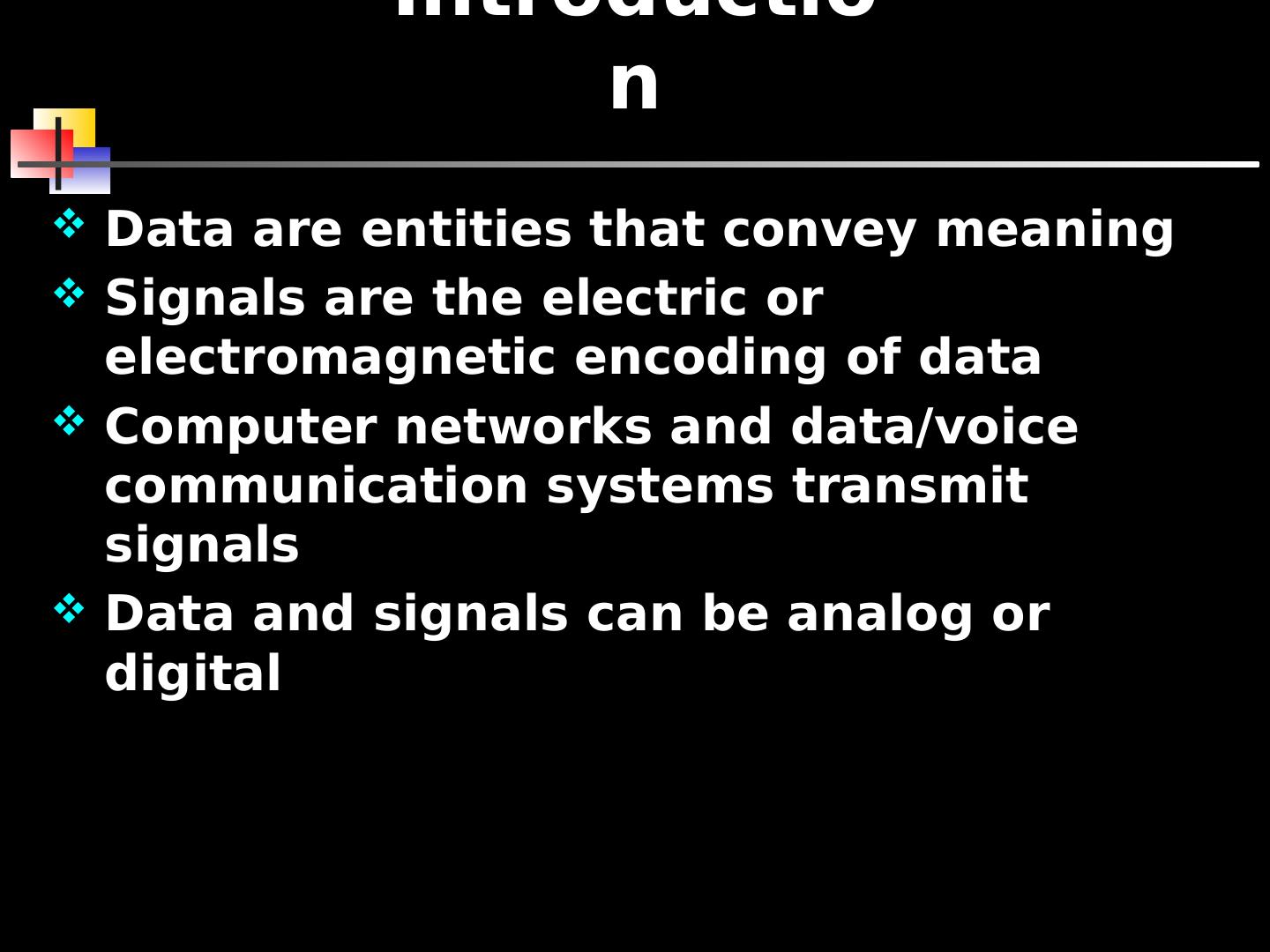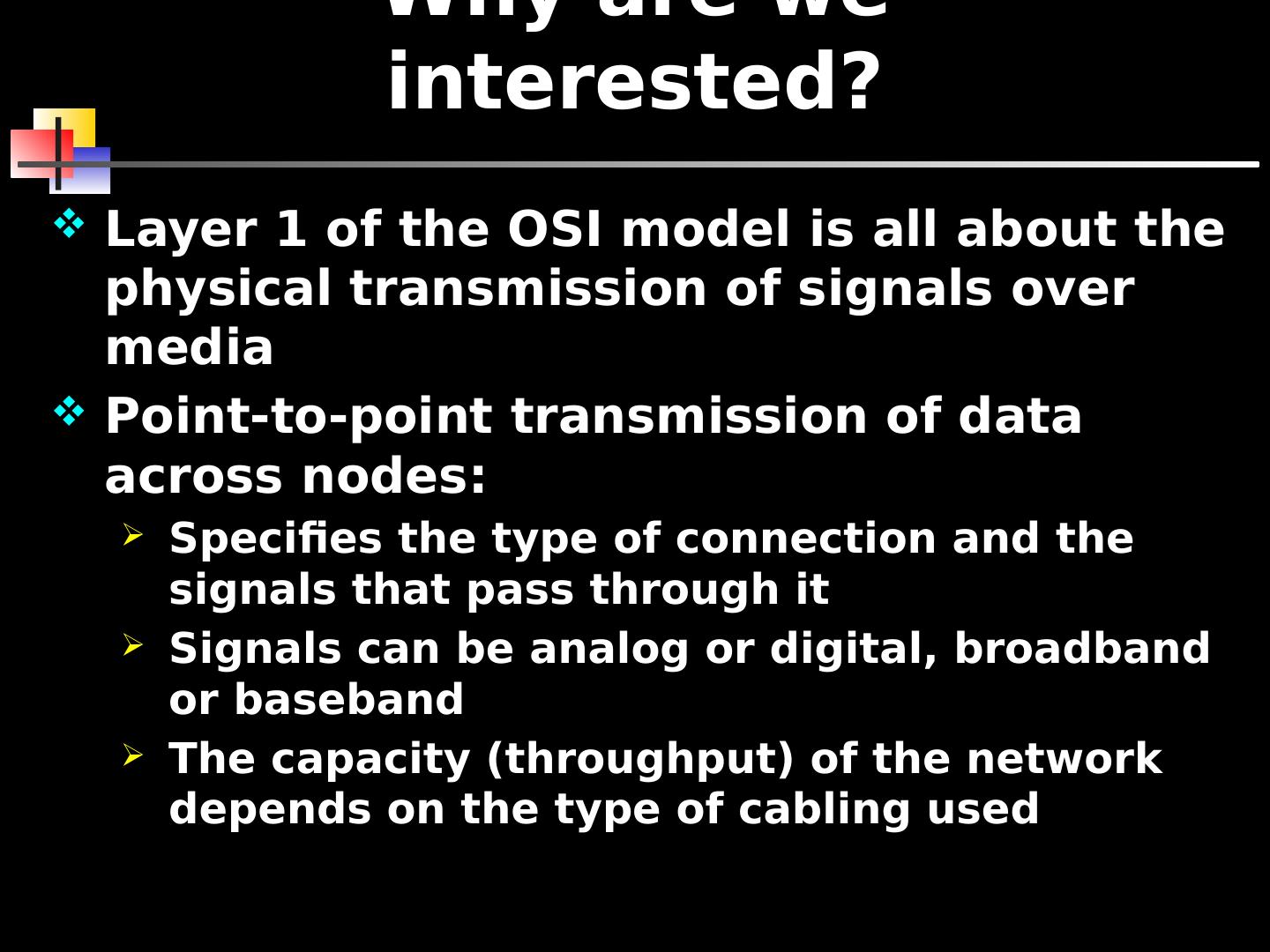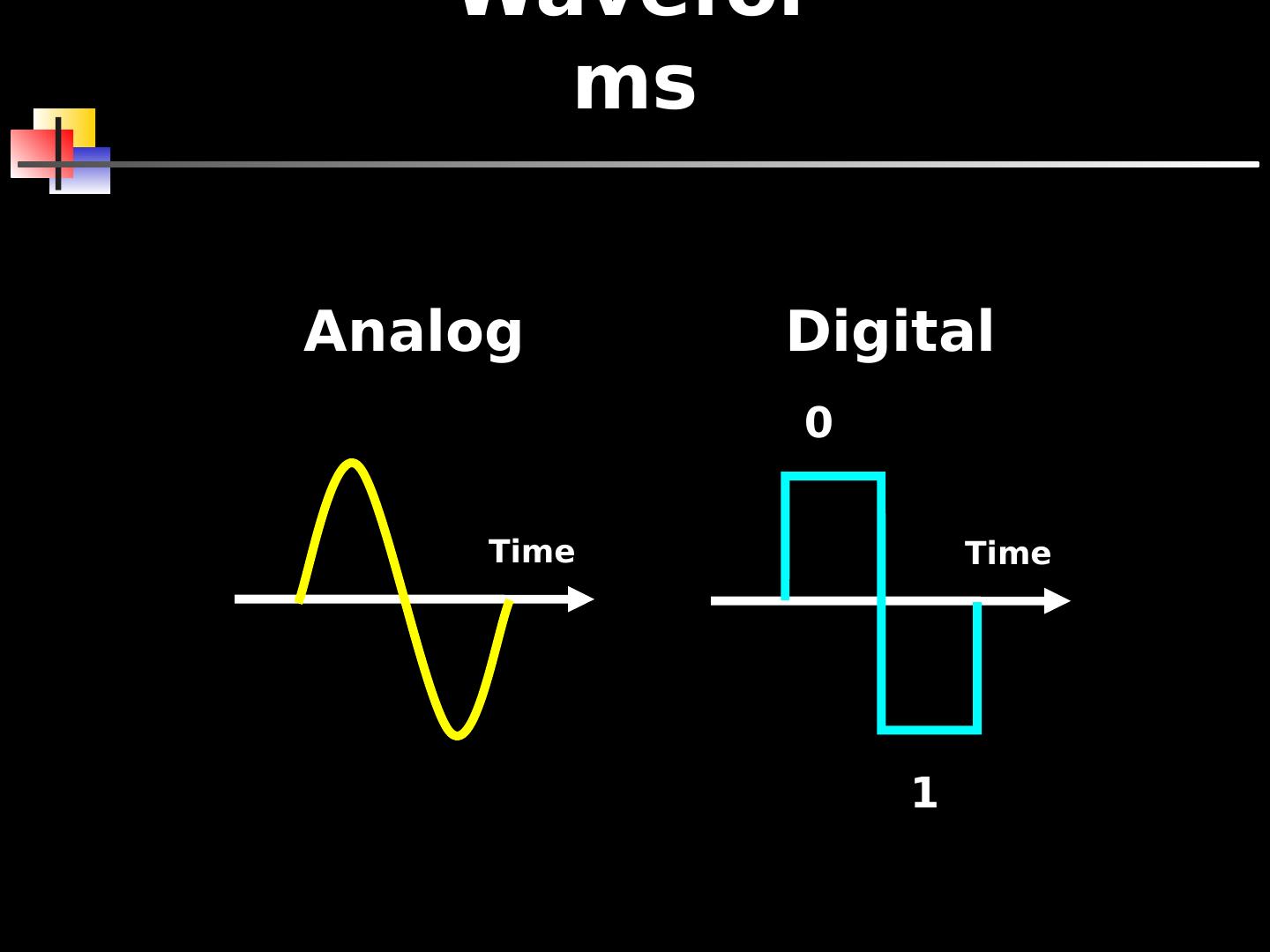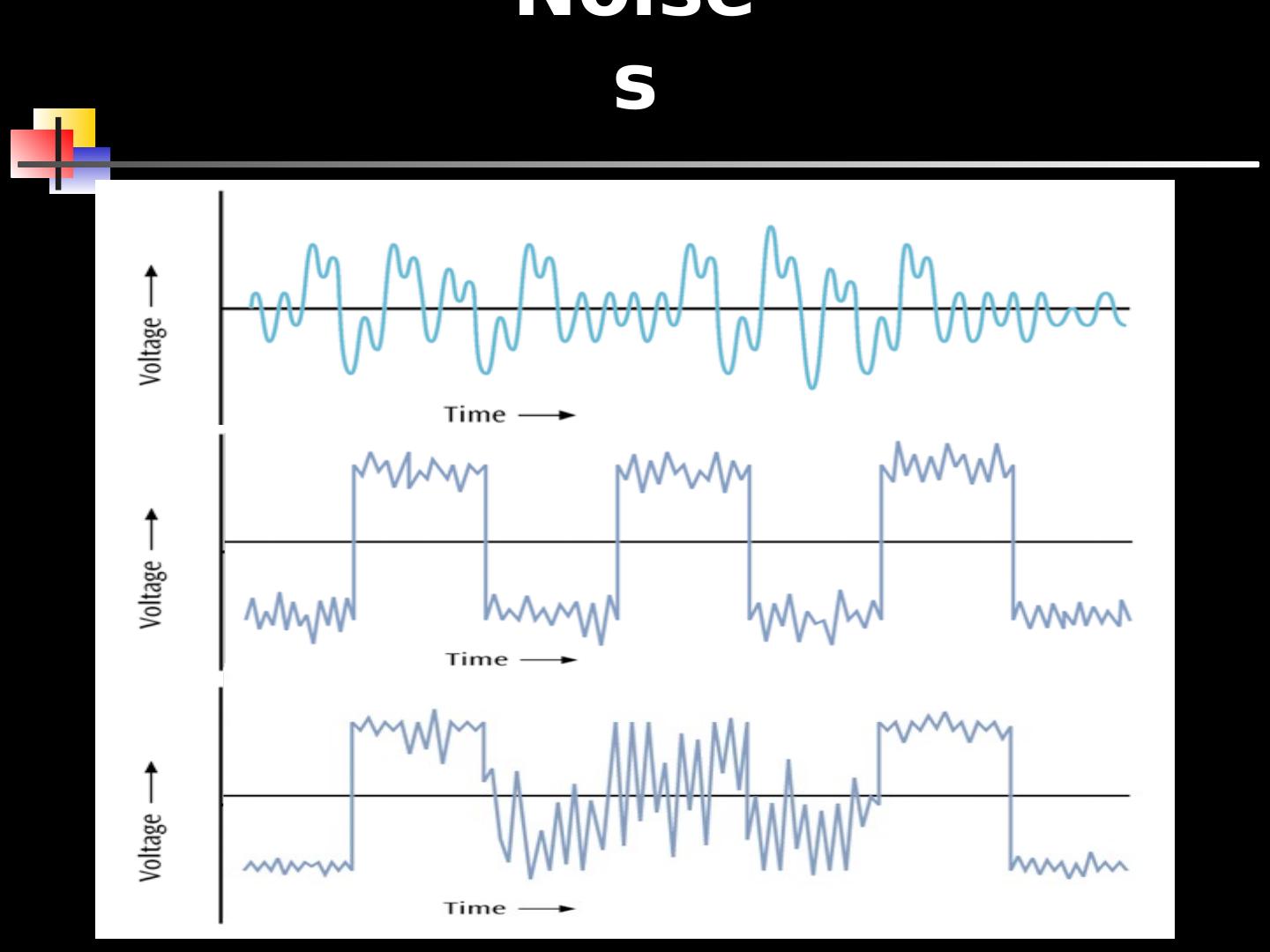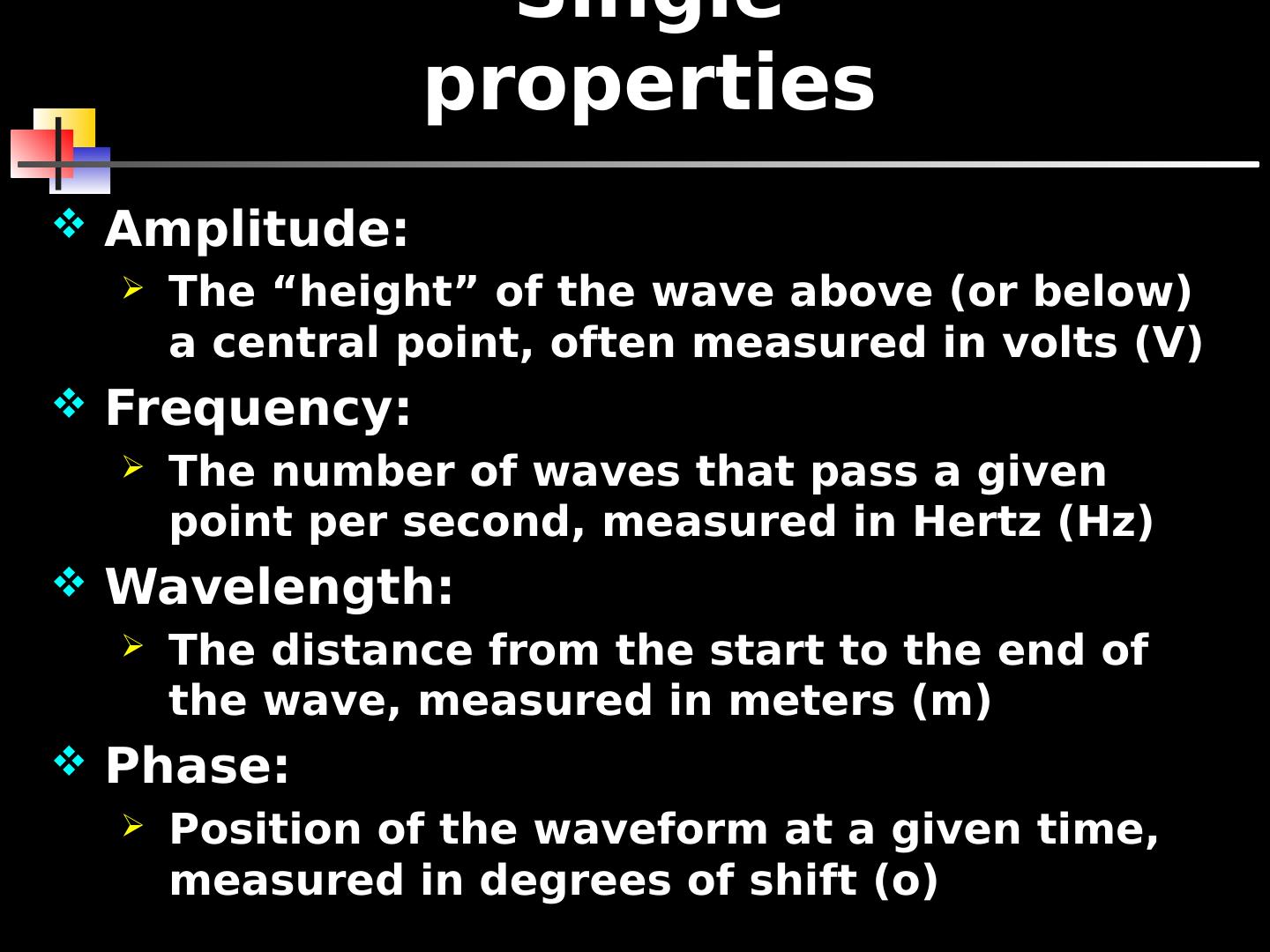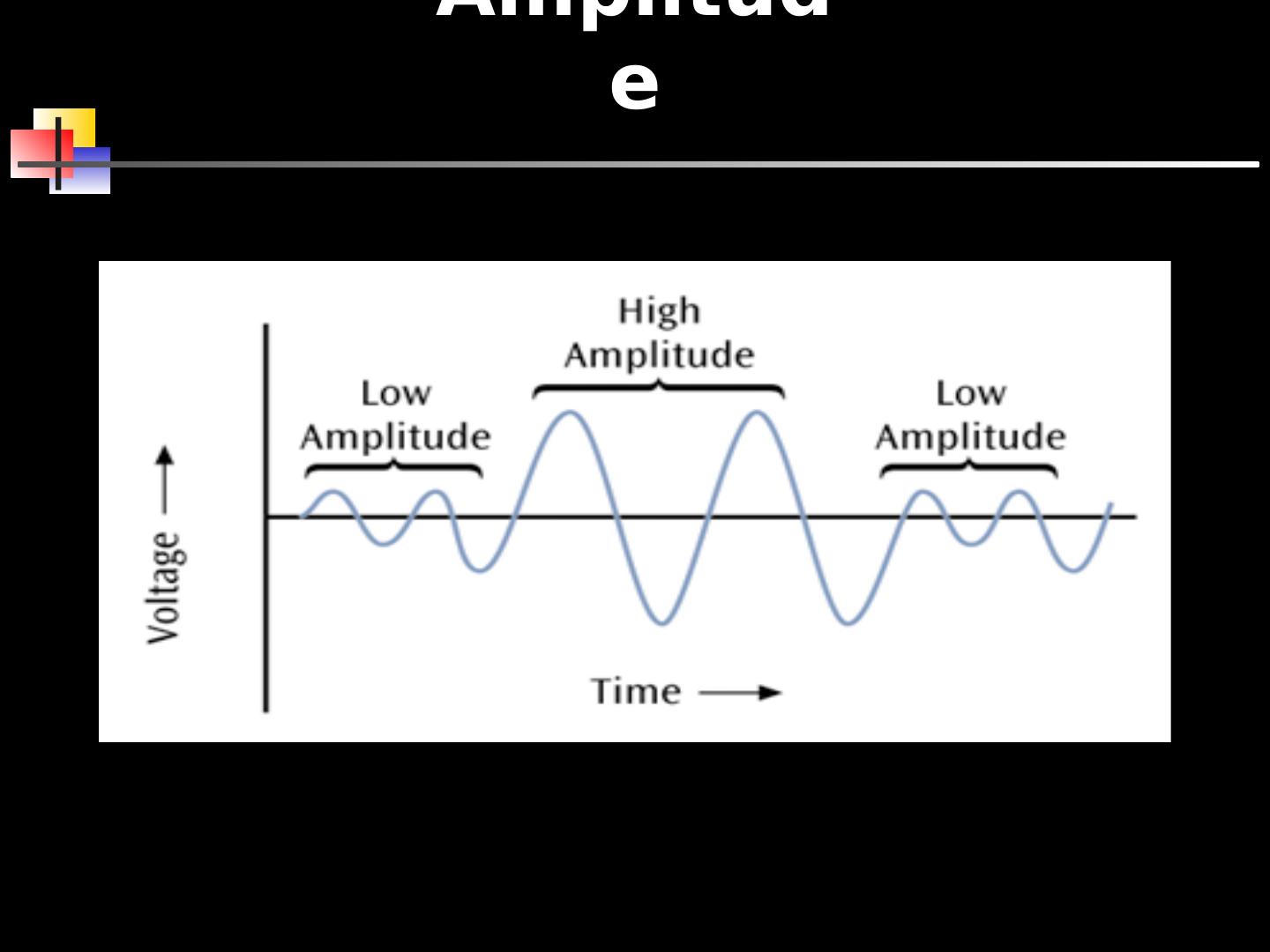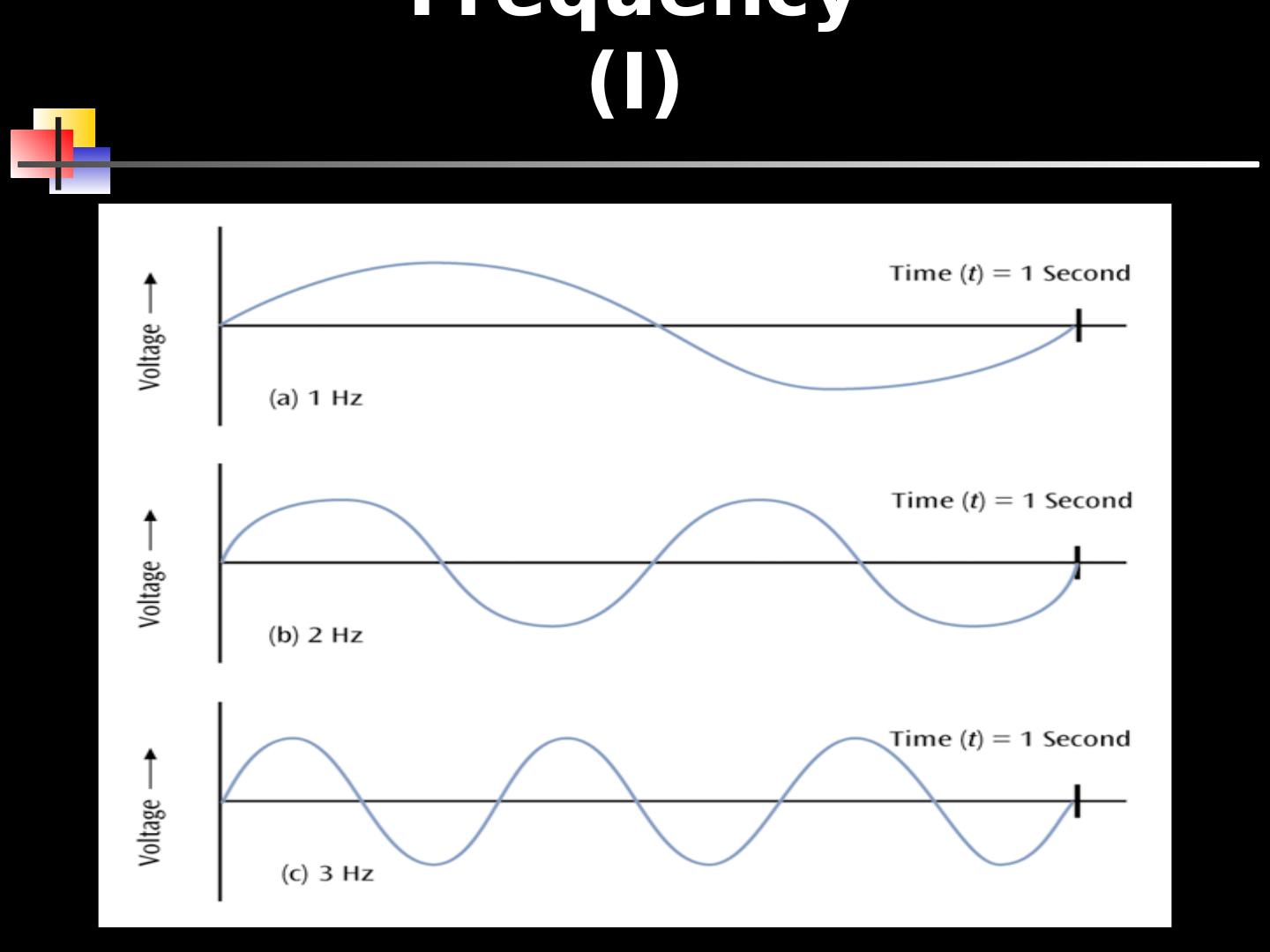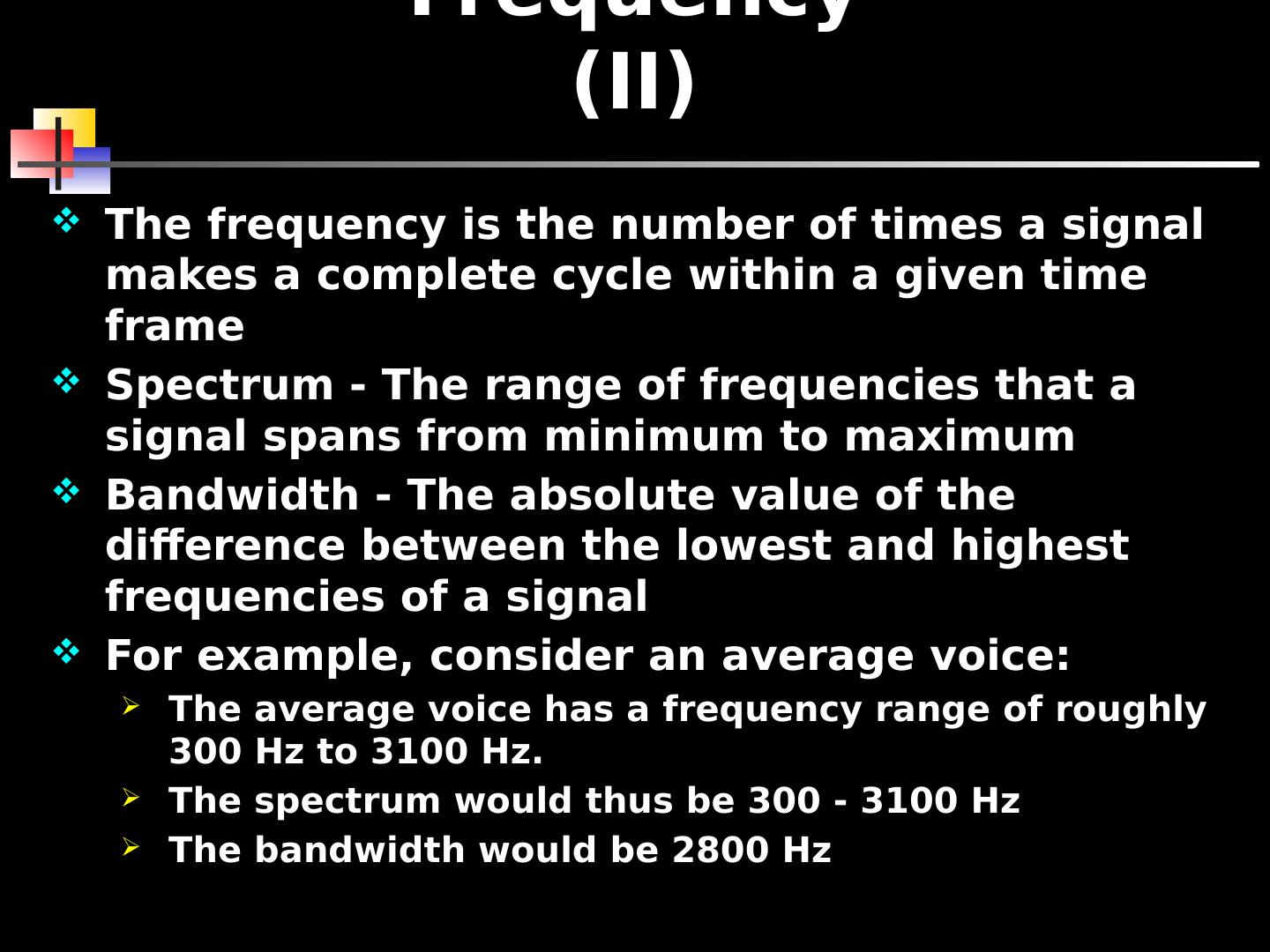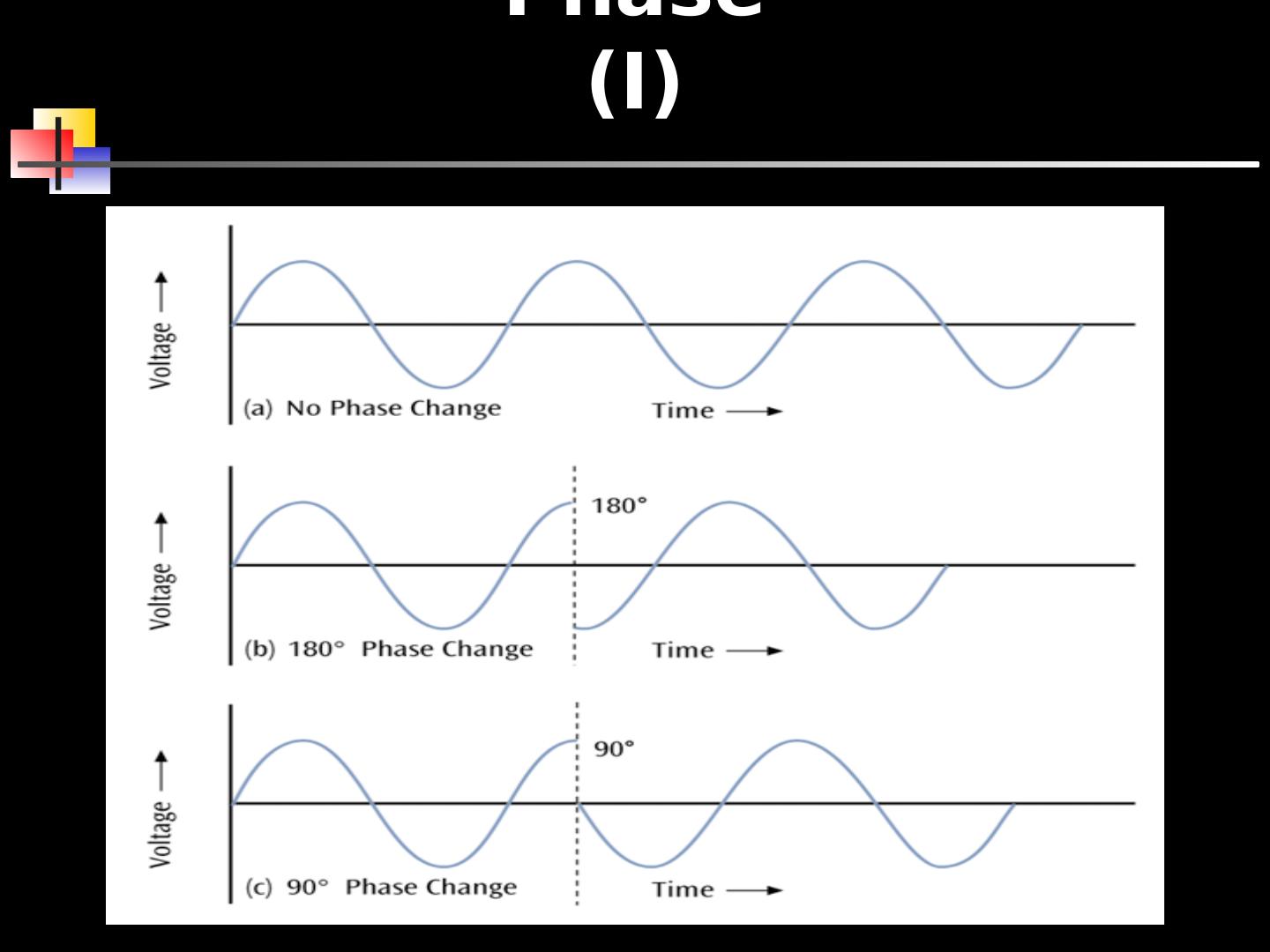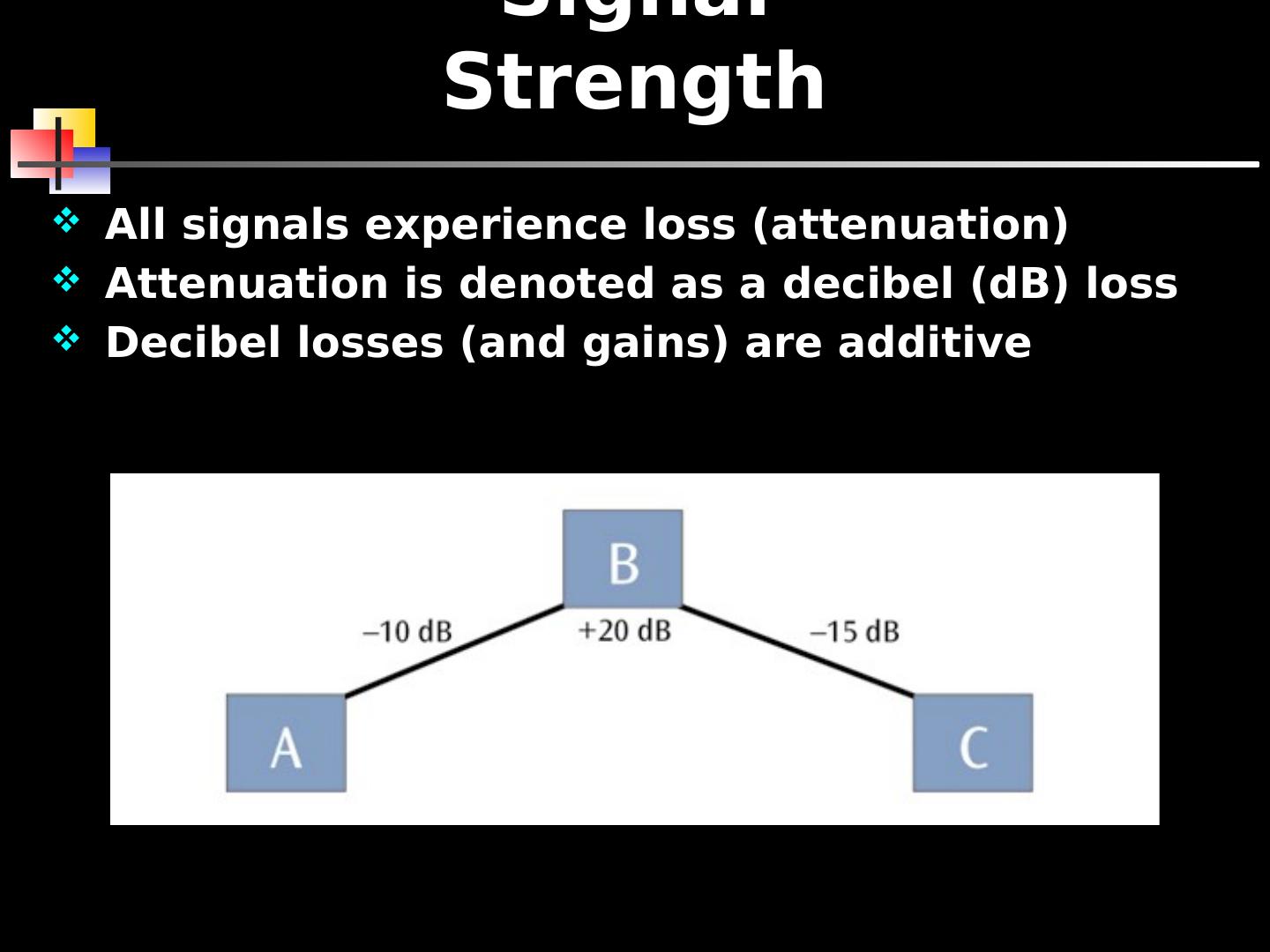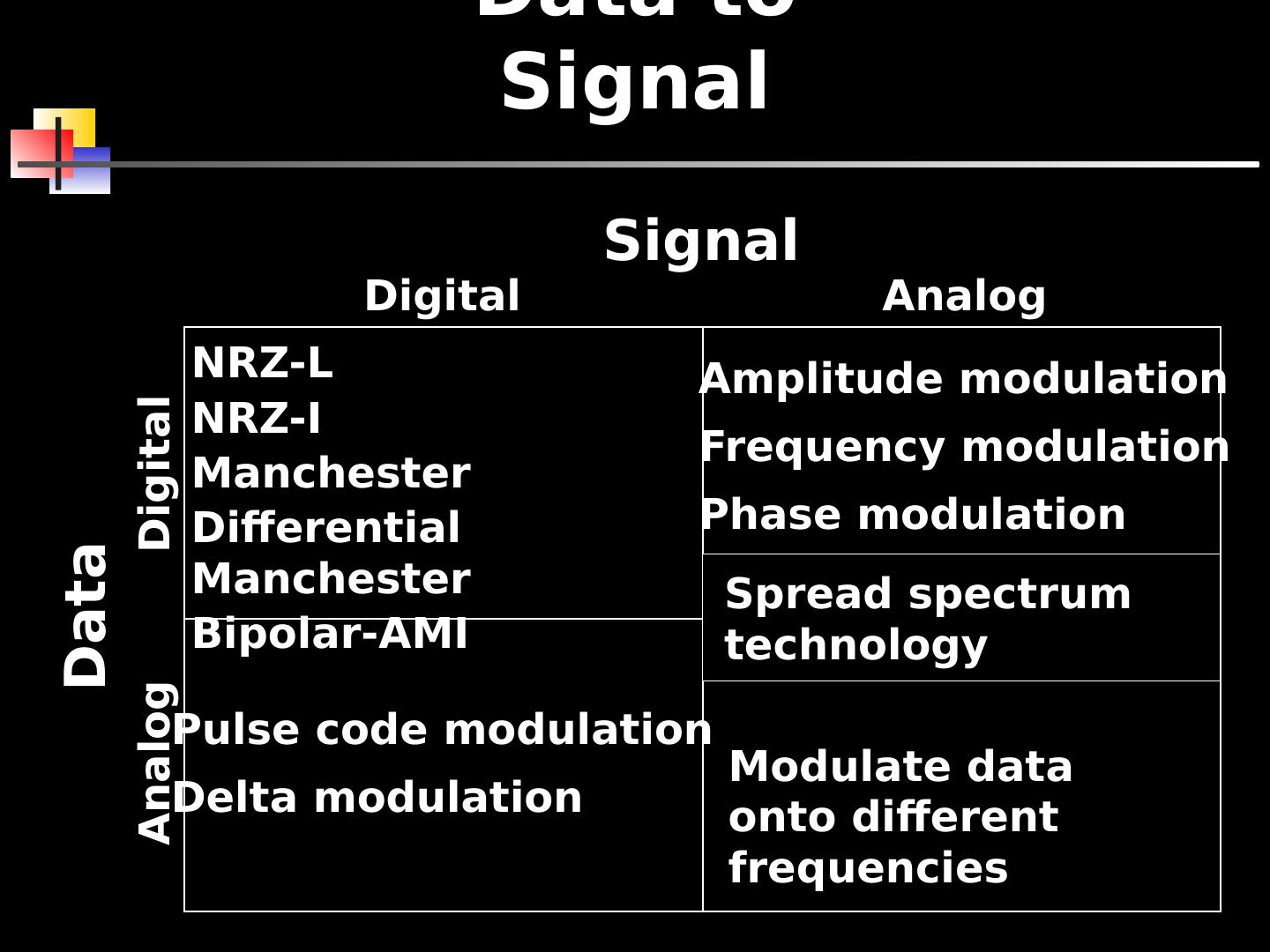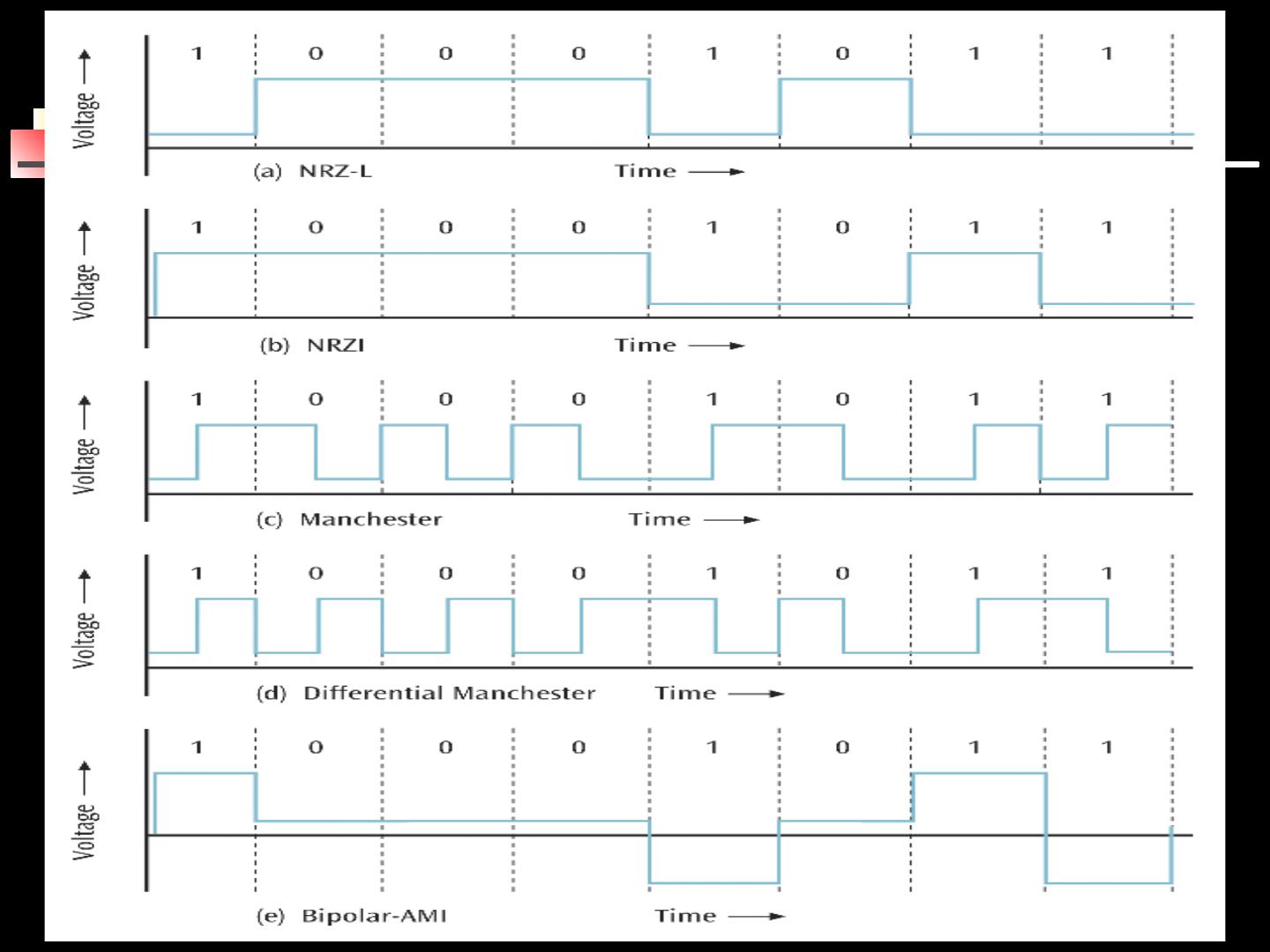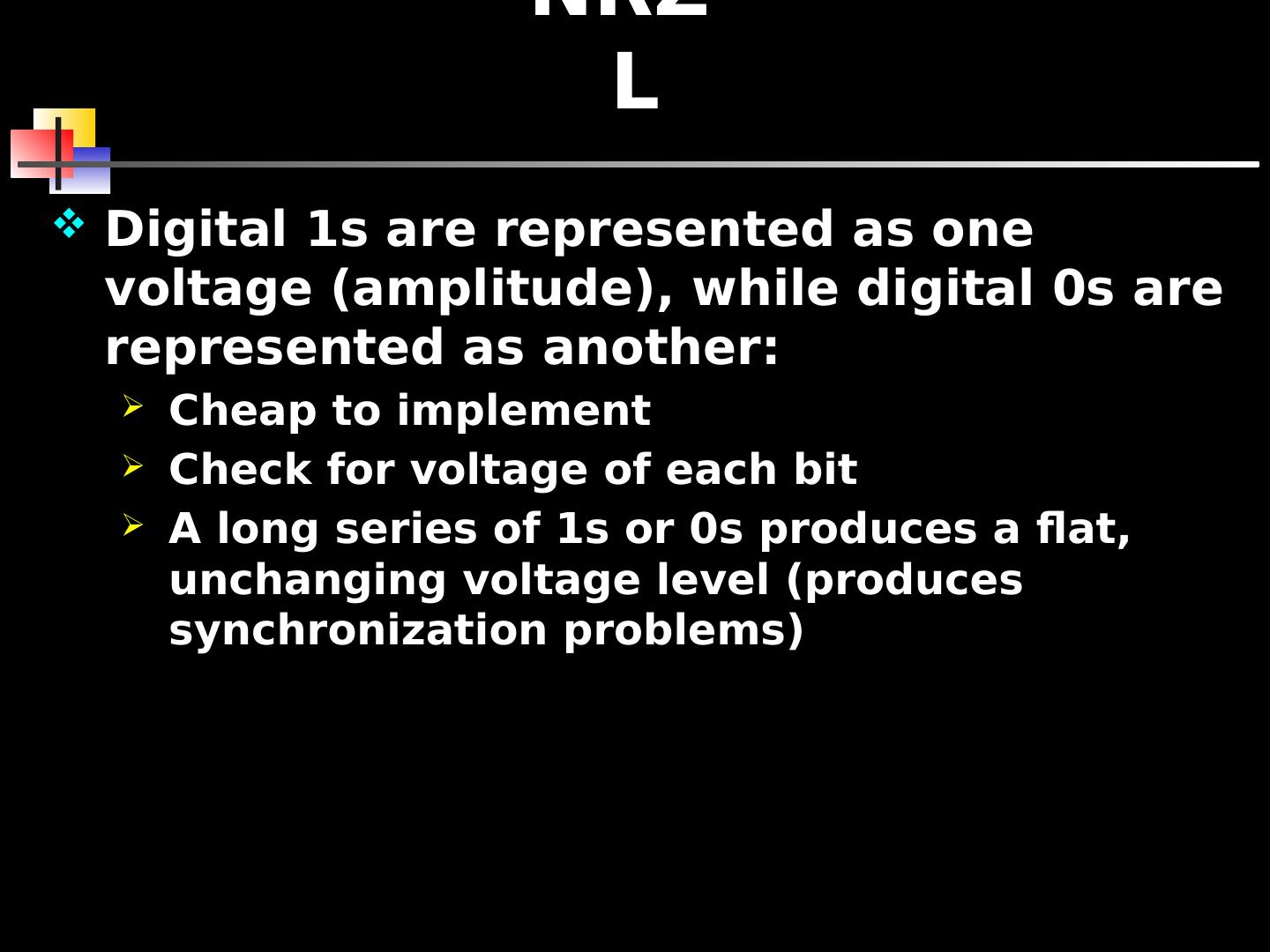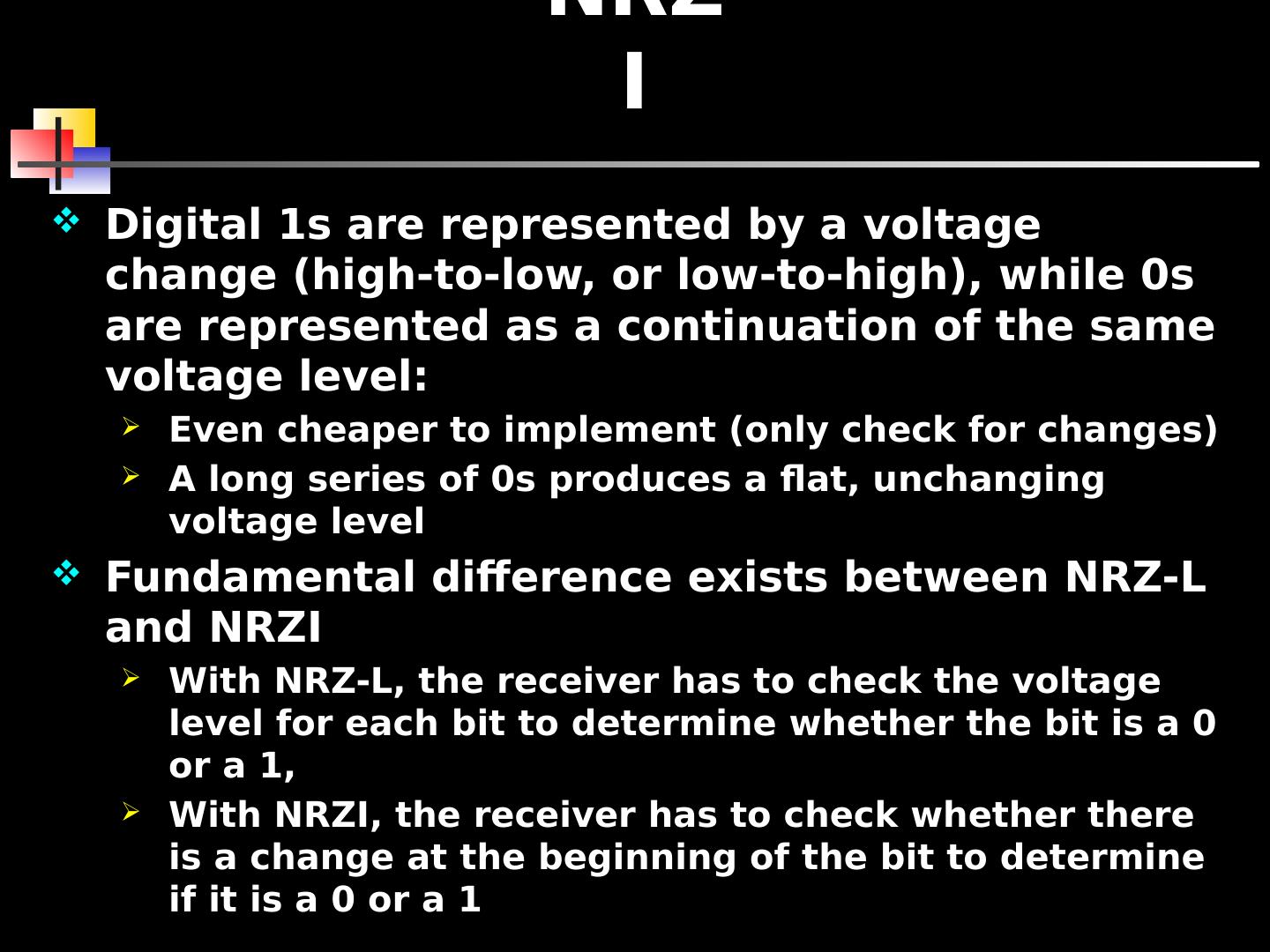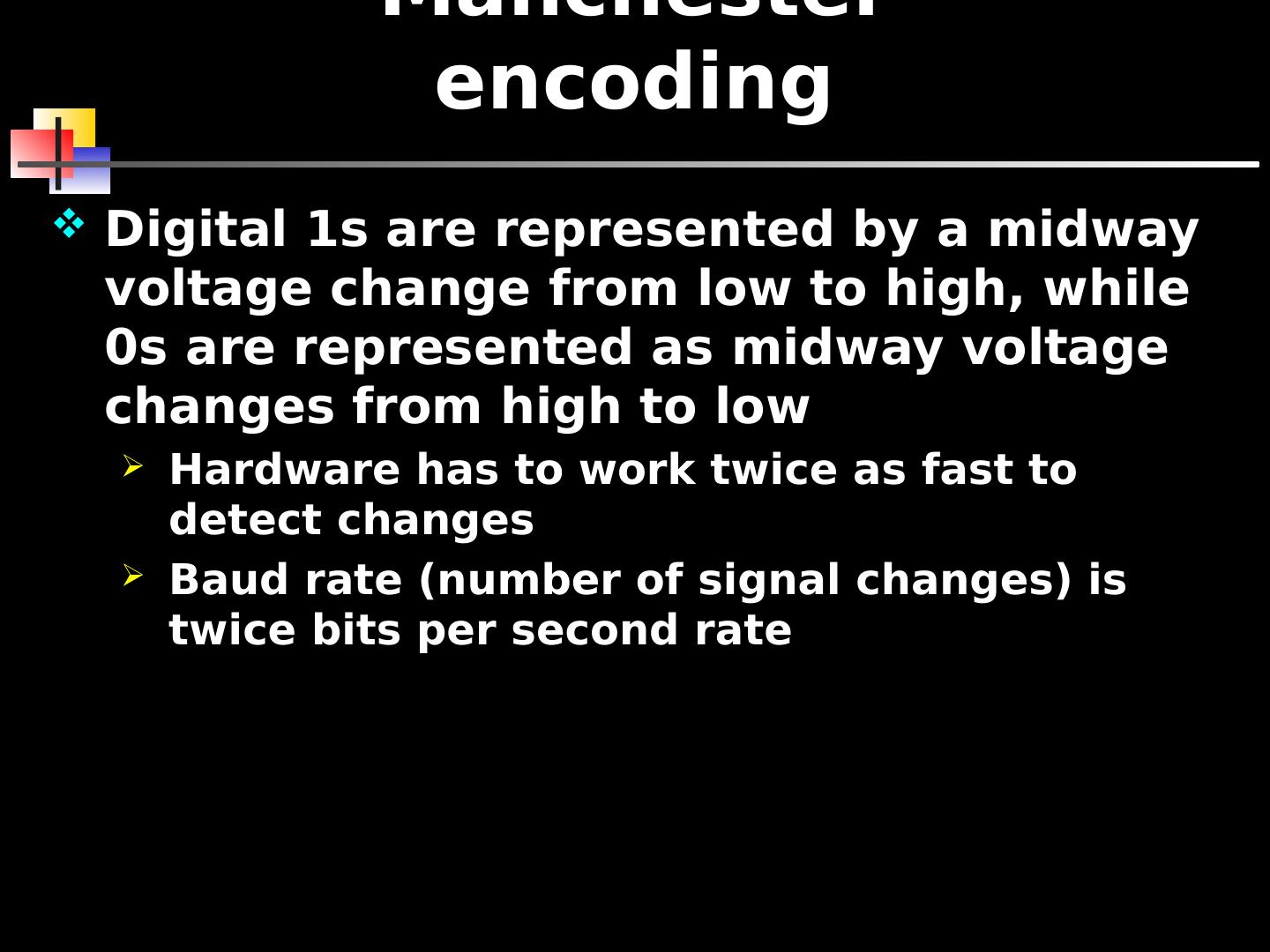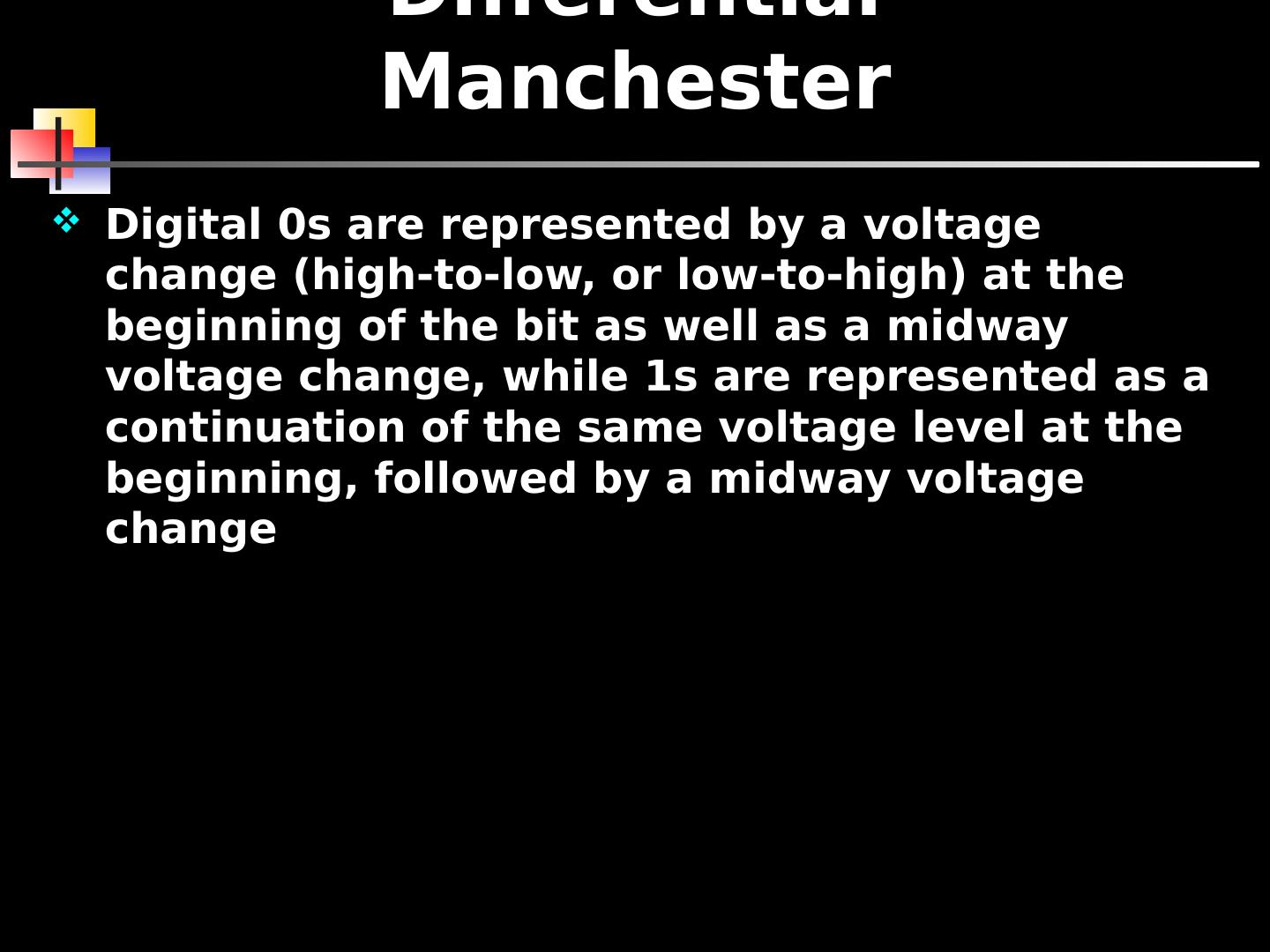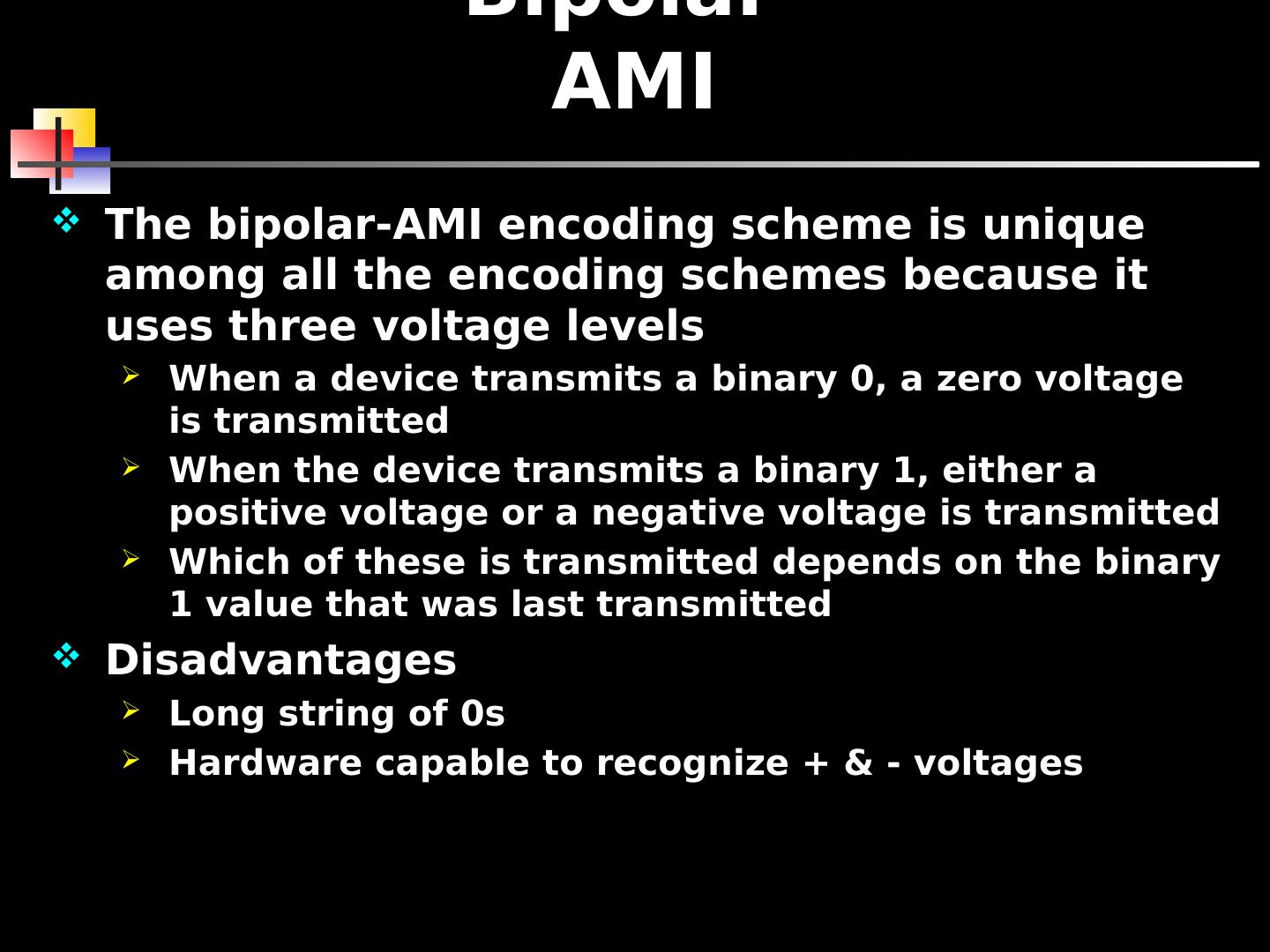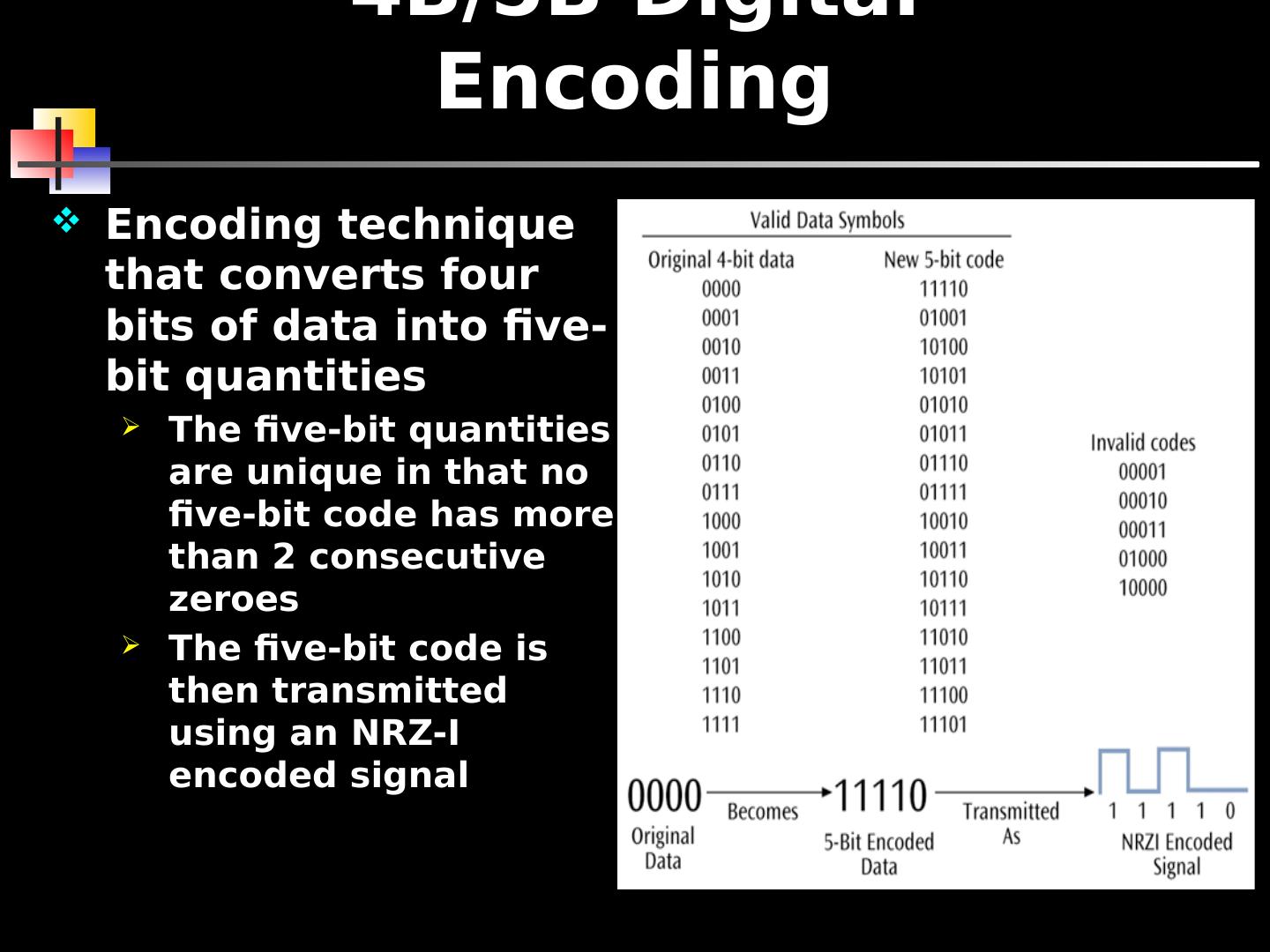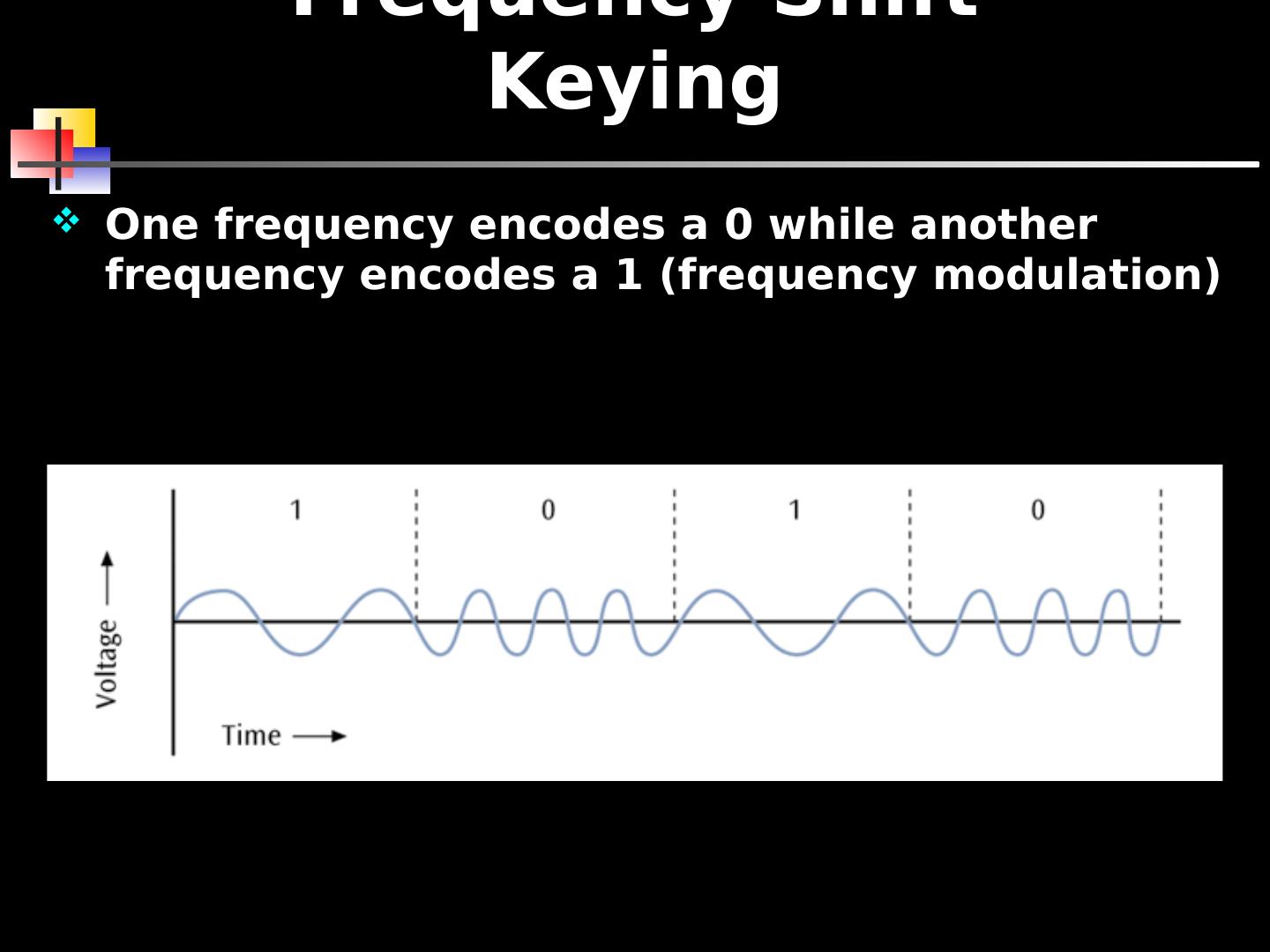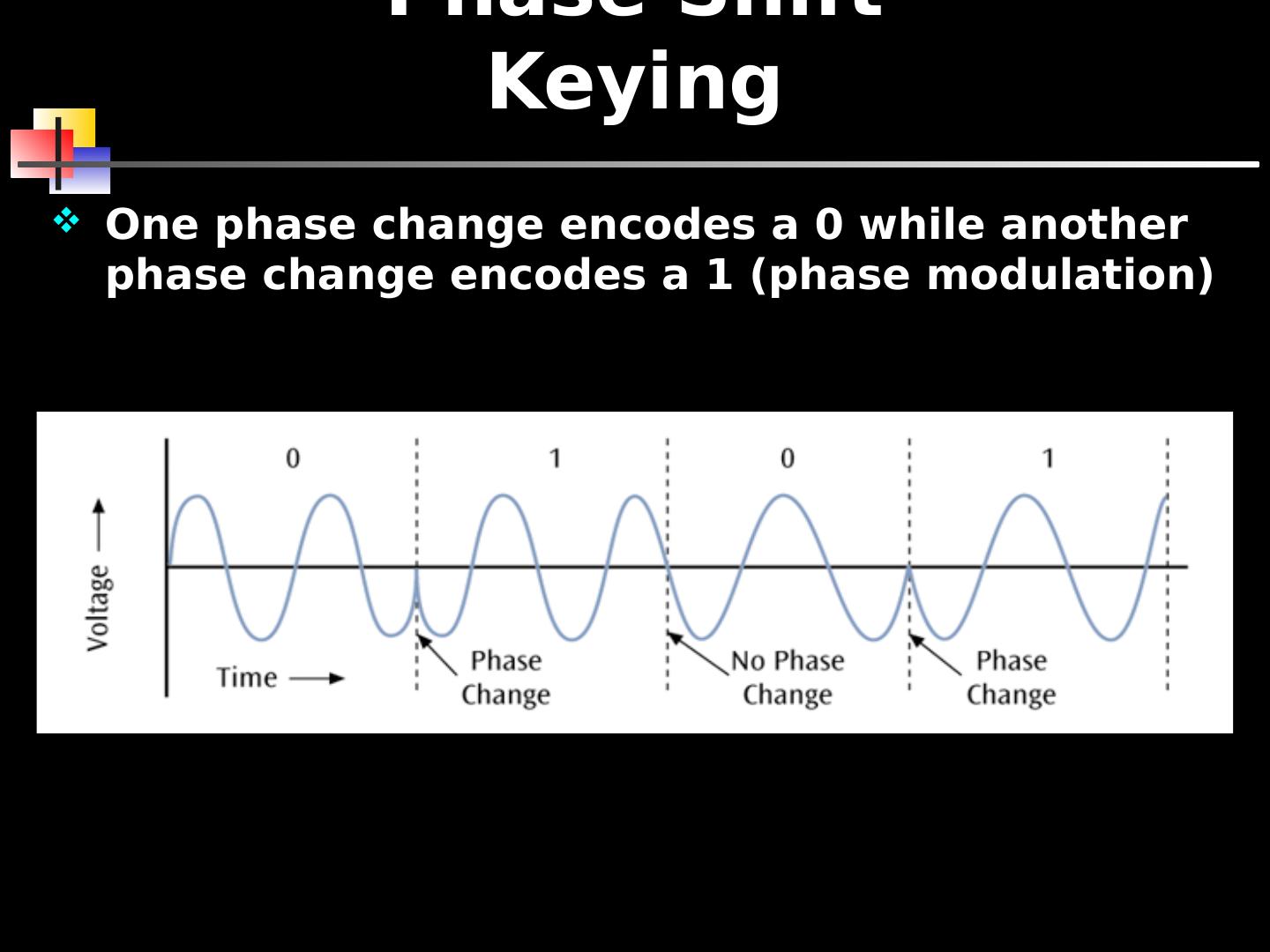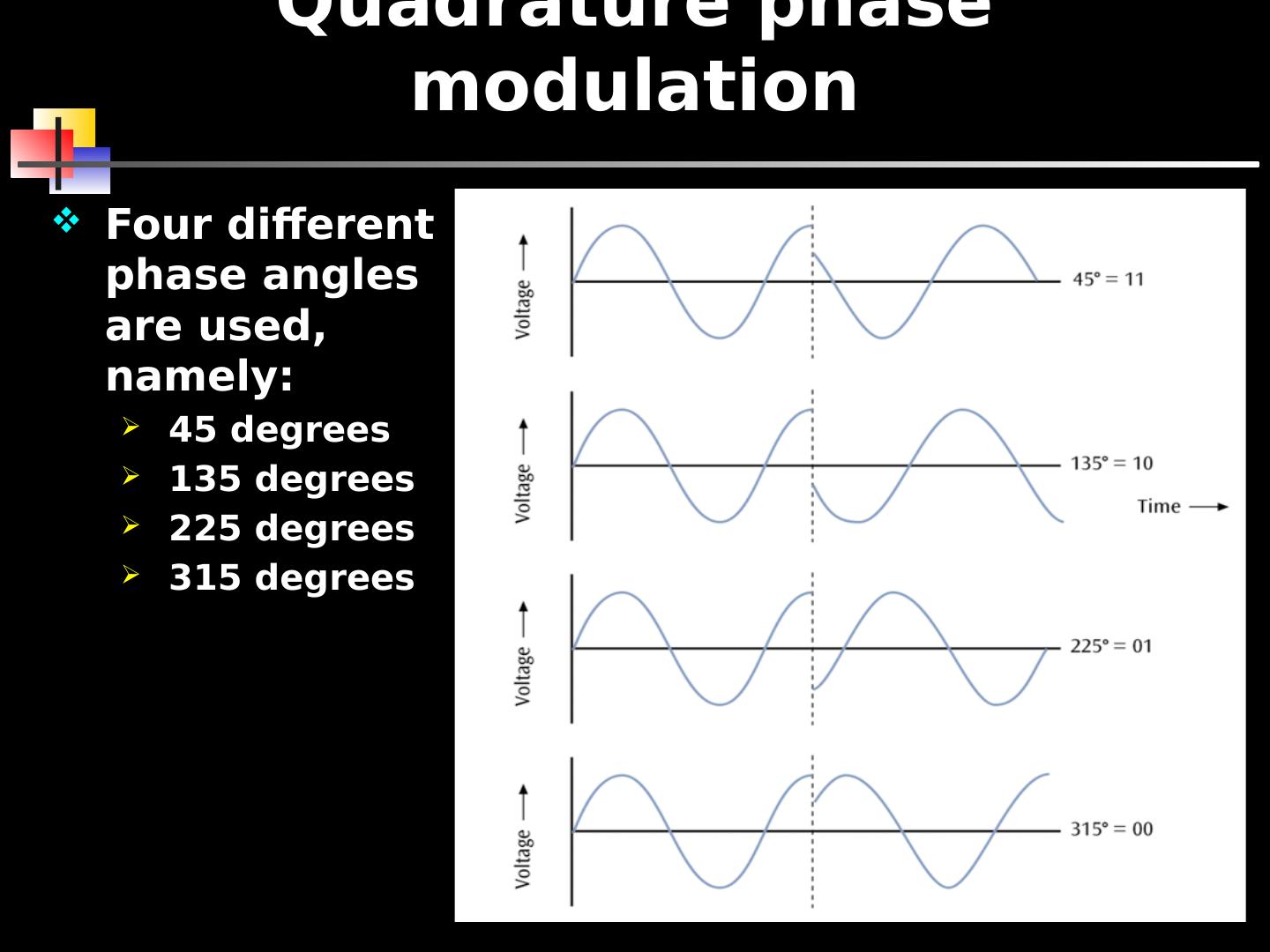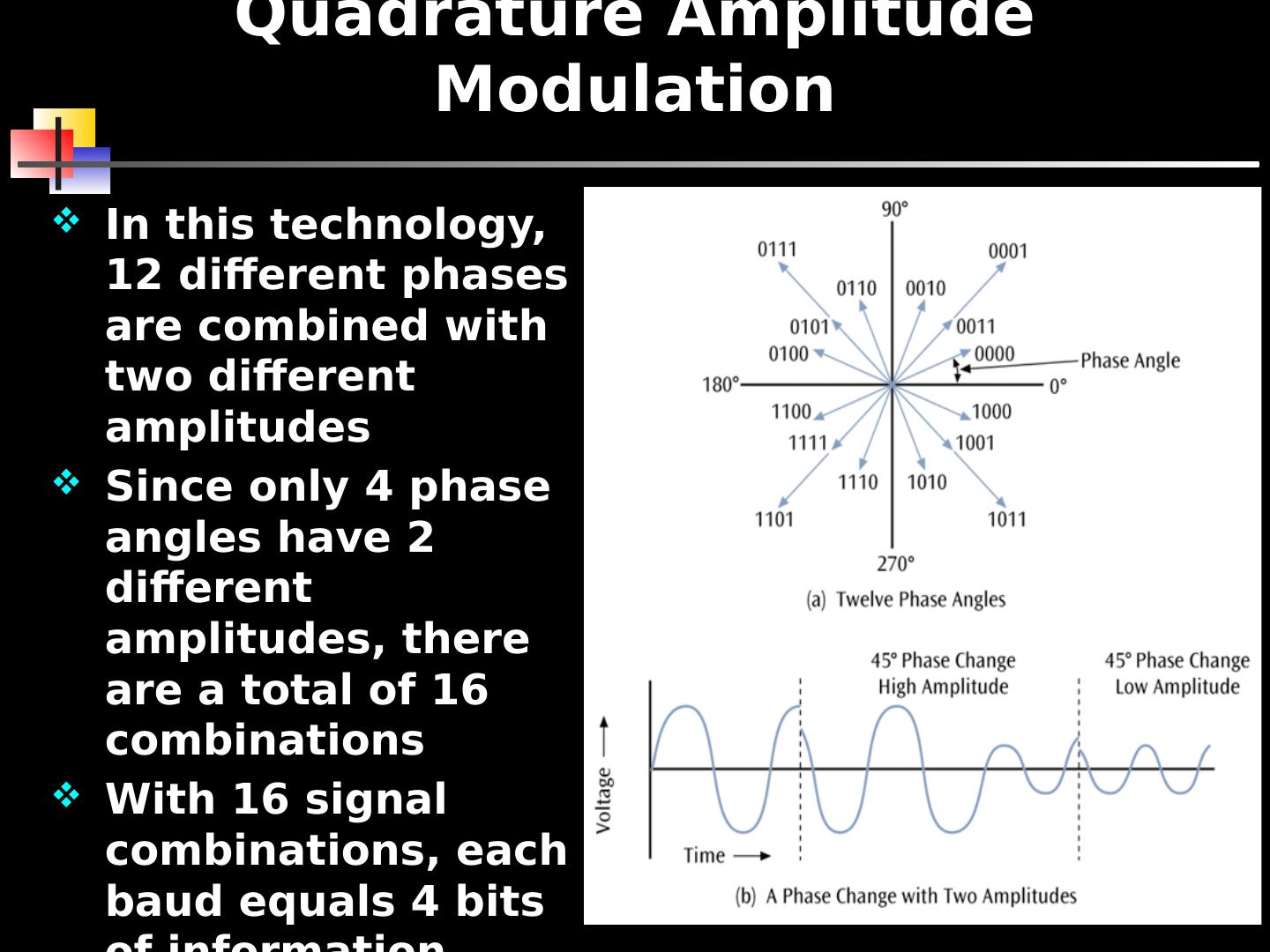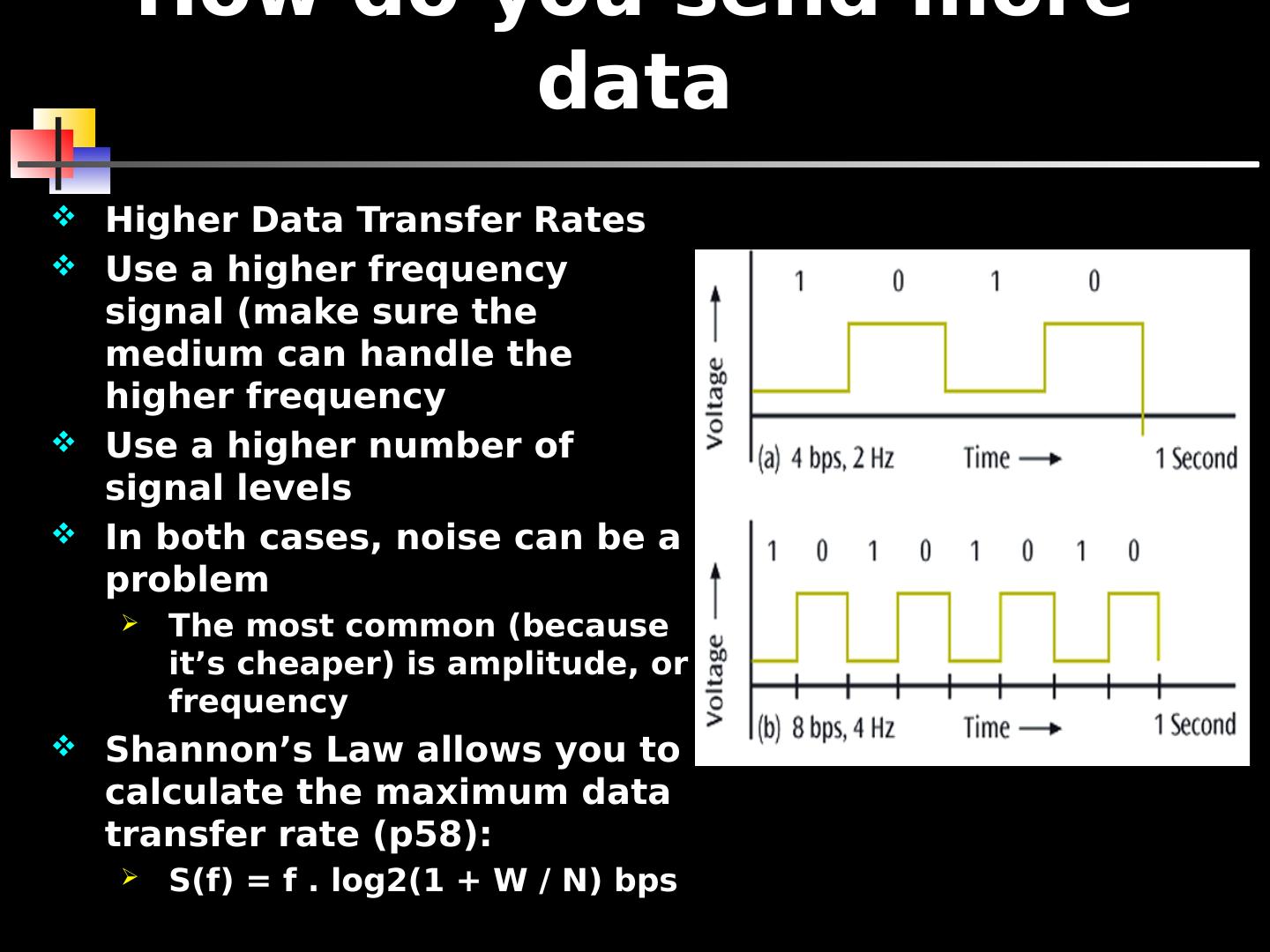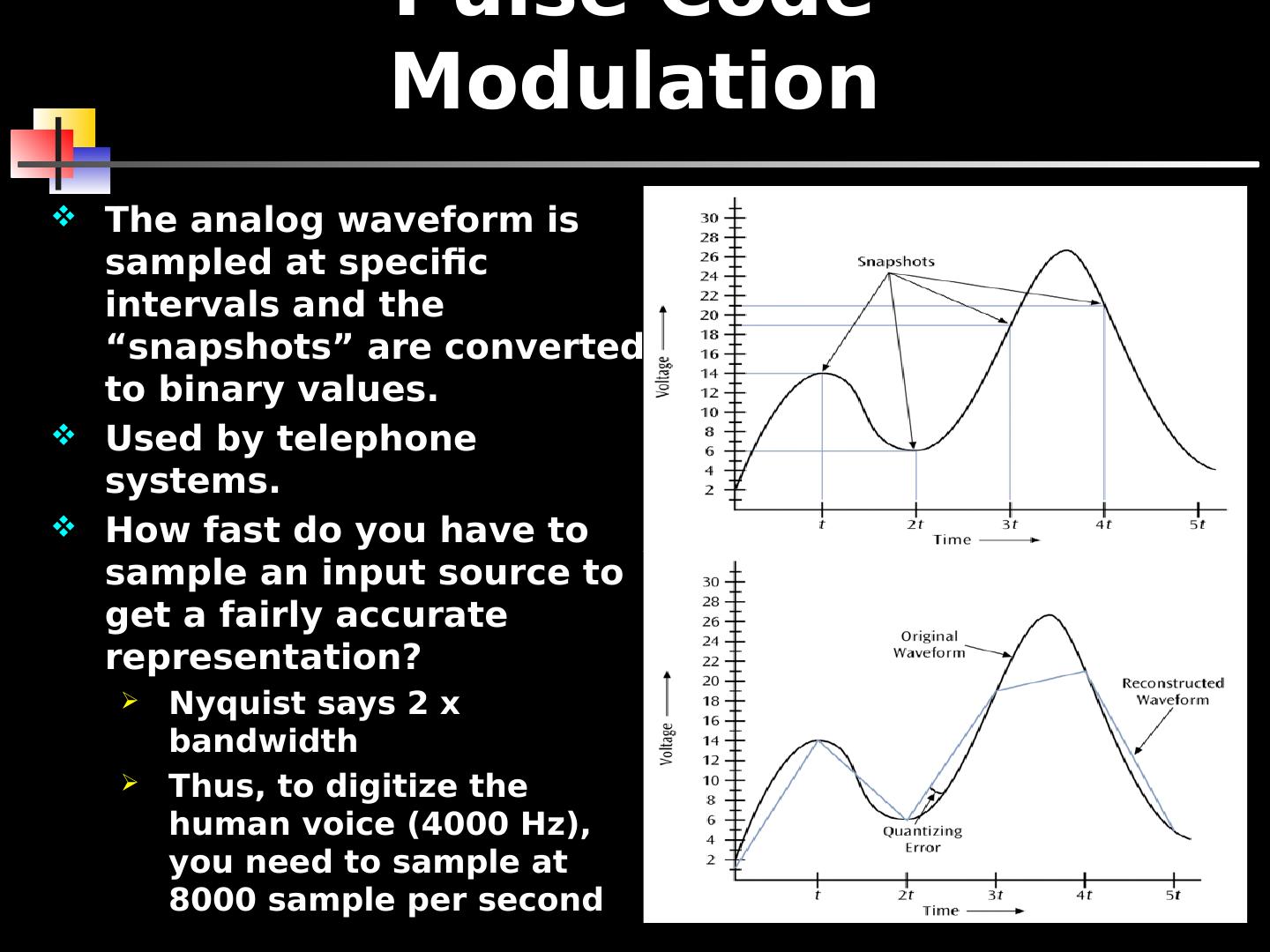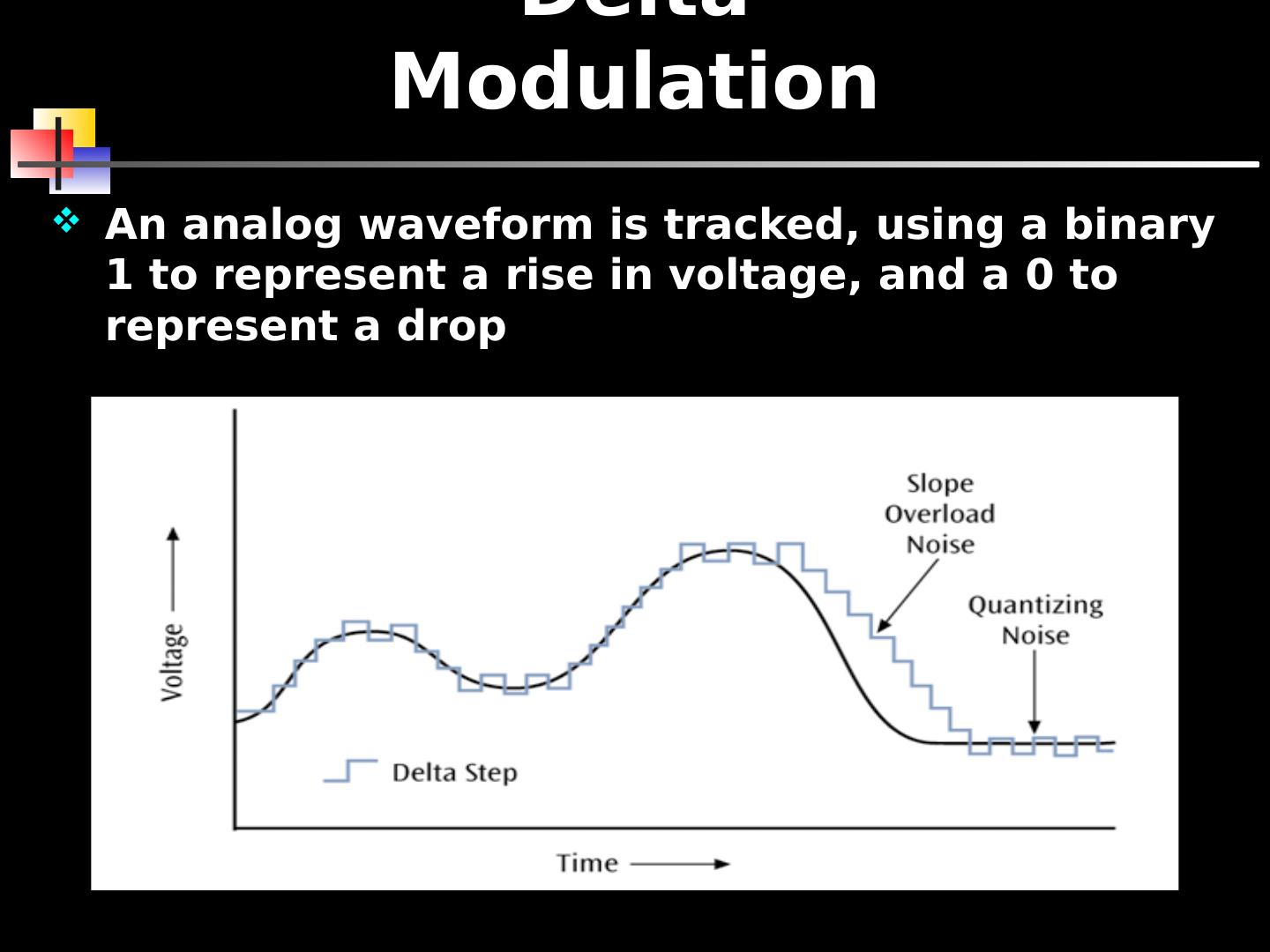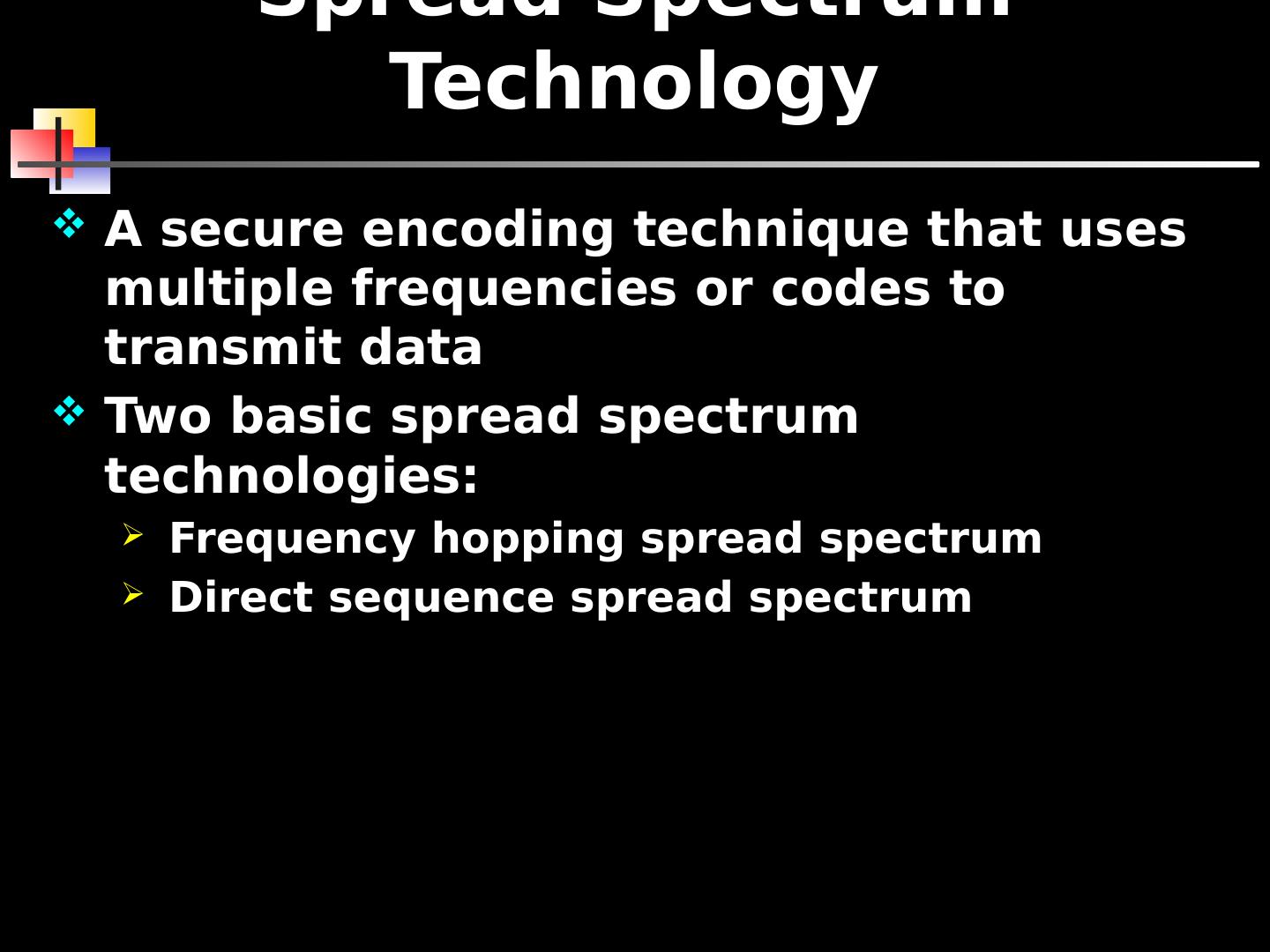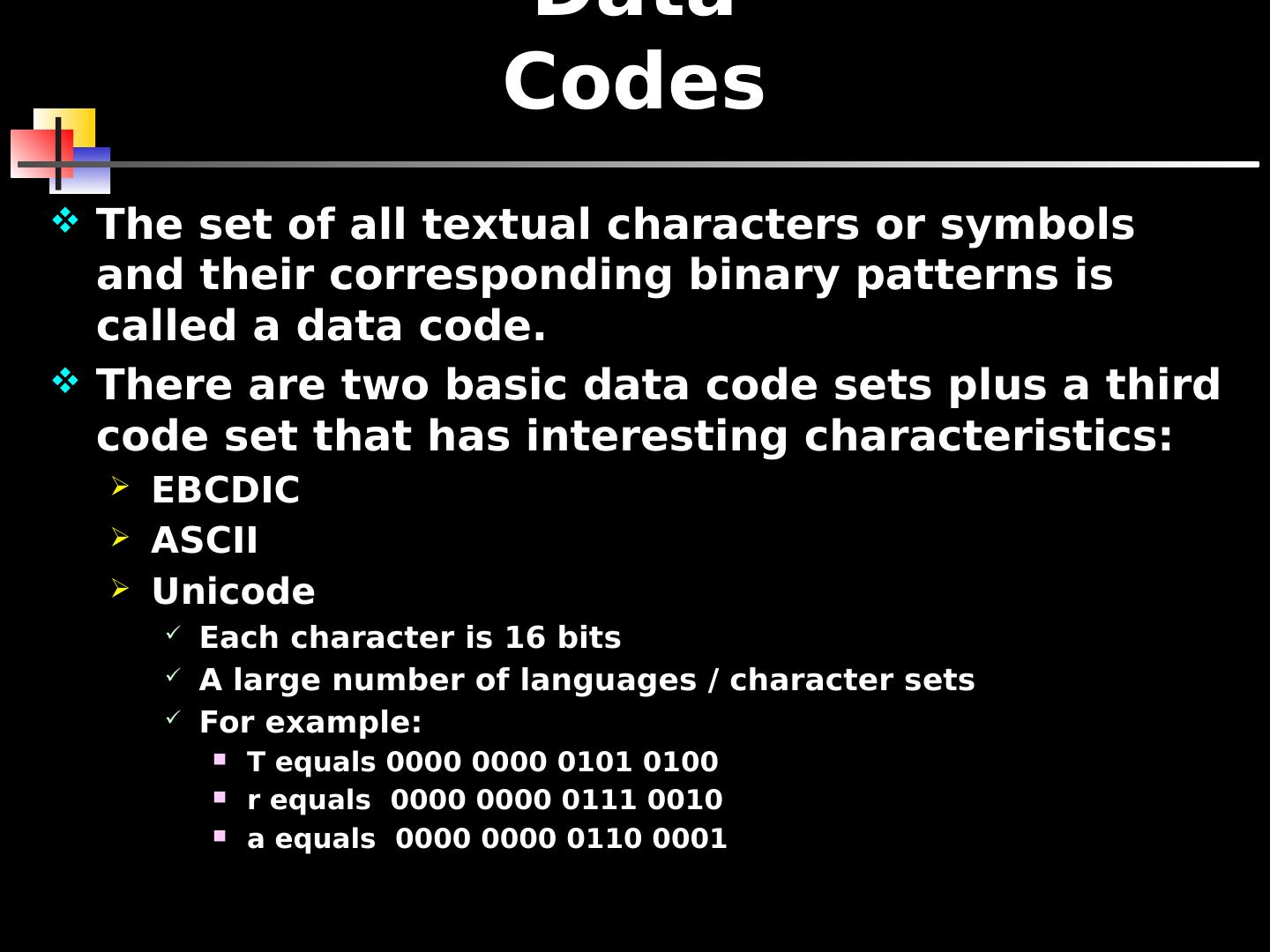- 快召唤伙伴们来围观吧
- 微博 QQ QQ空间 贴吧
- 文档嵌入链接
- <iframe src="https://www.slidestalk.com/u181/Data_Communications_Chapter2?embed" frame border="0" width="640" height="360" scrolling="no" allowfullscreen="true">复制
- 微信扫一扫分享
数据通信:数据与信号基础
展开查看详情
1 .Chapter 2 Fundamentals of Data and Signals
2 .Introduction Data are entities that convey meaning Signals are the electric or electromagnetic encoding of data Computer networks and data/voice communication systems transmit signals Data and signals can be analog or digital
3 .Why are we interested? Layer 1 of the OSI model is all about the physical transmission of signals over media Point-to-point transmission of data across nodes: Specifies the type of connection and the signals that pass through it Signals can be analog or digital, broadband or baseband The capacity (throughput) of the network depends on the type of cabling used
4 .Waveforms 0 1 Time Time Analog Digital
5 .Noises
6 .Single properties Amplitude: The “height” of the wave above (or below) a central point, often measured in volts (V) Frequency: The number of waves that pass a given point per second, measured in Hertz (Hz) Wavelength: The distance from the start to the end of the wave, measured in meters (m) Phase: Position of the waveform at a given time, measured in degrees of shift (o)
7 .Amplitude
8 .Frequency (I)
9 .Frequency (II) The frequency is the number of times a signal makes a complete cycle within a given time frame Spectrum - The range of frequencies that a signal spans from minimum to maximum Bandwidth - The absolute value of the difference between the lowest and highest frequencies of a signal For example, consider an average voice: The average voice has a frequency range of roughly 300 Hz to 3100 Hz. The spectrum would thus be 300 - 3100 Hz The bandwidth would be 2800 Hz
10 .Phase (I)
11 .Phase (II) The phase of a signal is the position of the waveform relative to a given moment of time or relative to time zero A change in phase can be any number of angles between 0 and 360 degrees Phase changes often occur on common angles, such as 45, 90, 135, etc.
12 .Signal Strength All signals experience loss (attenuation) Attenuation is denoted as a decibel (dB) loss Decibel losses (and gains) are additive
13 .Data to Signal Digital Digital Analog Analog Signal Data NRZ-L NRZ-I Manchester Differential Manchester Bipolar-AMI Amplitude modulation Frequency modulation Phase modulation Pulse code modulation Delta modulation Modulate data onto different frequencies Spread spectrum technology
14 .Analog data-analog signals
15 .
16 .NRZ-L Digital 1s are represented as one voltage (amplitude), while digital 0s are represented as another: Cheap to implement Check for voltage of each bit A long series of 1s or 0s produces a flat, unchanging voltage level (produces synchronization problems)
17 .NRZI Digital 1s are represented by a voltage change (high-to-low, or low-to-high), while 0s are represented as a continuation of the same voltage level: Even cheaper to implement (only check for changes) A long series of 0s produces a flat, unchanging voltage level Fundamental difference exists between NRZ-L and NRZI With NRZ-L, the receiver has to check the voltage level for each bit to determine whether the bit is a 0 or a 1, With NRZI, the receiver has to check whether there is a change at the beginning of the bit to determine if it is a 0 or a 1
18 .Manchester encoding Digital 1s are represented by a midway voltage change from low to high, while 0s are represented as midway voltage changes from high to low Hardware has to work twice as fast to detect changes Baud rate (number of signal changes) is twice bits per second rate
19 .Differential Manchester Digital 0s are represented by a voltage change (high-to-low, or low-to-high) at the beginning of the bit as well as a midway voltage change, while 1s are represented as a continuation of the same voltage level at the beginning, followed by a midway voltage change
20 .Bipolar-AMI The bipolar-AMI encoding scheme is unique among all the encoding schemes because it uses three voltage levels When a device transmits a binary 0, a zero voltage is transmitted When the device transmits a binary 1, either a positive voltage or a negative voltage is transmitted Which of these is transmitted depends on the binary 1 value that was last transmitted Disadvantages Long string of 0s Hardware capable to recognize + & - voltages
21 .4B/5B Digital Encoding Encoding technique that converts four bits of data into five-bit quantities The five-bit quantities are unique in that no five-bit code has more than 2 consecutive zeroes The five-bit code is then transmitted using an NRZ-I encoded signal
22 .Amplitude Shift Keying One amplitude encodes a 0 while another amplitude encodes a 1 (amplitude modulation)
23 .Frequency Shift Keying One frequency encodes a 0 while another frequency encodes a 1 (frequency modulation)
24 .Phase Shift Keying One phase change encodes a 0 while another phase change encodes a 1 (phase modulation)
25 .Quadrature phase modulation Four different phase angles are used, namely: 45 degrees 135 degrees 225 degrees 315 degrees
26 .Quadrature Amplitude Modulation In this technology, 12 different phases are combined with two different amplitudes Since only 4 phase angles have 2 different amplitudes, there are a total of 16 combinations With 16 signal combinations, each baud equals 4 bits of information
27 .How do you send more data Higher Data Transfer Rates Use a higher frequency signal (make sure the medium can handle the higher frequency Use a higher number of signal levels In both cases, noise can be a problem The most common (because it’s cheaper) is amplitude, or frequency Shannon’s Law allows you to calculate the maximum data transfer rate (p58): S(f) = f . log2(1 + W / N) bps
28 .Pulse Code Modulation The analog waveform is sampled at specific intervals and the “snapshots” are converted to binary values. Used by telephone systems. How fast do you have to sample an input source to get a fairly accurate representation? Nyquist says 2 x bandwidth Thus, to digitize the human voice (4000 Hz), you need to sample at 8000 sample per second
29 .Delta Modulation An analog waveform is tracked, using a binary 1 to represent a rise in voltage, and a 0 to represent a drop




